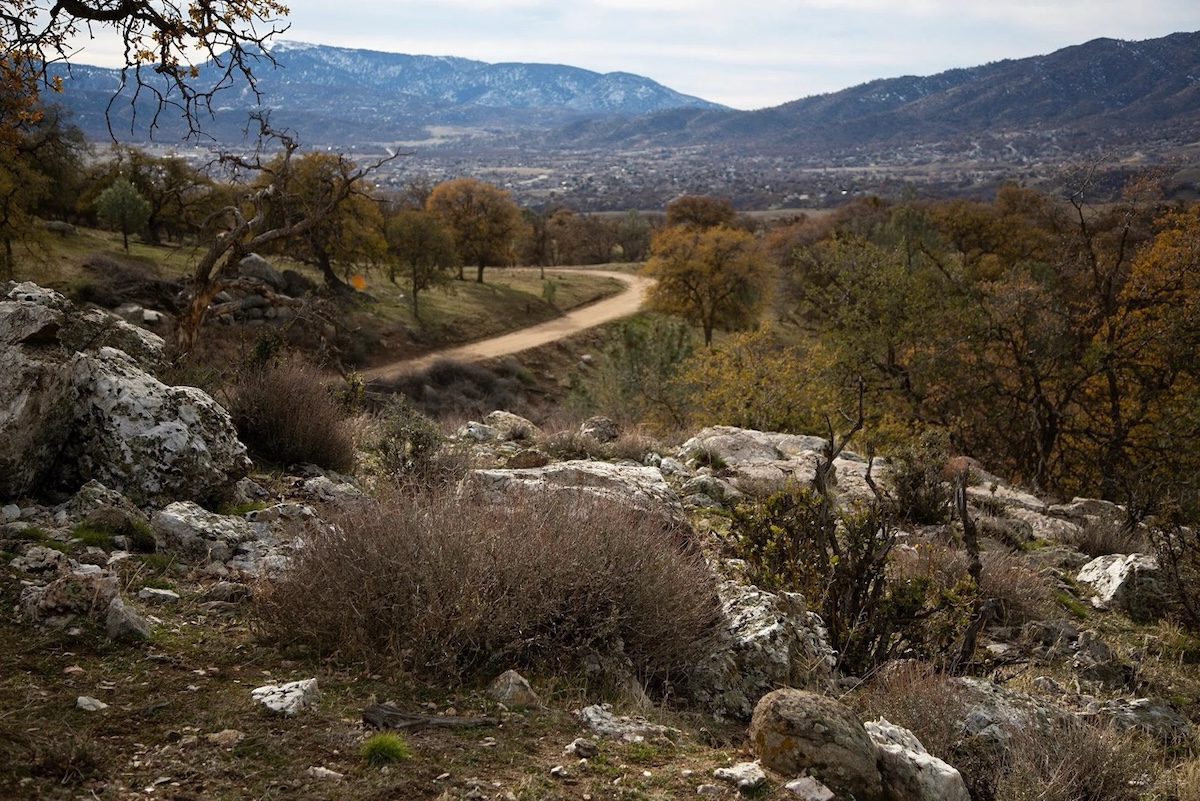A Soil Fungus That Can Kill Is on the Rise in California: What to Know About Valley Fever
A Recent Outbreak of Valley Fever, Which Kills About 80 Californians Every Year, Was Traced to Music Festival

The Santa Barbara Independent republishes stories from CalMatters.org on state and local issues impacting readers in Santa Barbara County.
It’s shaping up to be a bad year — possibly the worst yet — when it comes to Valley fever, a fungal disease marked by cough and fevers. More than 5,300 cases have been reported in California through June, that’s 63% more infections than the same period last year.
Valley fever is caused when people inhale microscopic spores of a fungus found in soil. This fungus typically affects the lungs. Many cases are mild and resolve on their own, but the infections, which are not contagious, can become serious enough to require hospitalization. About 80 Californians die every year from it. Moderate cases may last months and require antifungal medication.
Earlier this week the California Department of Public Health announced that at least a handful of people became sick with Valley fever after traveling to Kern County for an outdoor music festival at Buena Vista Lake in May. Three attendees were hospitalized, the department said. Health officials are encouraging people who attended the Lightning in a Bottle festival to contact their medical provider if they have been feeling sick and not improving.
Historically, the majority of Valley fever cases have been reported in Kern County, but a significant number have also been identified in Los Angeles, Fresno and in Central Coast counties.
As cases rise across the state, here are four things to know about Valley fever.
Valley fever fungus can travel long distances
A fungus known as Coccidioides is responsible for Valley fever. Fungus spores can be rustled from the soil and into the air by activities such as farming and construction, but winds also stir them. In rare cases, infection can spread from the lungs to other parts of the body, including the heart and brain.
Valley fever is most common in the dry, hot southwestern U.S. and northern Mexico. In California, the majority of cases have been concentrated in the San Joaquin Valley — in fact, the region is the disease’s namesake. However, cases have been reported throughout the state.
The fungus can travel quite far in the air. “So even if you don’t live in the region, you still might be exposed,” said Katrina Hoyer, an immunologist and professor at UC Merced.
Avoiding dust is the best protection, said Kimberly Hernandez, an epidemiologist and division director of health services with the Kern County Public Health Department. That means avoiding going outside on especially windy days, if possible. People who have to be outdoors on a dusty day could benefit from wearing an N95 facemask.
Valley fever cases in California tripled over the last 10 years
Just over 2,300 people were diagnosed with Valley fever in 2014, according to the state’s data. By 2023, annual cases had more than tripled to more than 9,000. And in just the first six months of this year, 5,370 people were reported to have contracted Valley fever. About a third of this year’s cases have been reported in Kern County.
This growing number of reported infections could be attributed to a few different factors, experts say.
“There’s a lot more construction happening up and down the San Joaquin Valley, as we continue to grow in this region. More roads, more solar panels, more homes, all of that is disturbing the soil,” Hoyer said.
Also, more providers and patients are becoming aware of the disease and testing for it.
“We are hopeful in Kern County, given our history of having lots of Valley fever, that our health care providers are really good at looking for it,” Hernandez said. “That’s sort of the bright spot, even though we do have a lot of cases. We want people with Valley fever to get diagnosed, because if they need medication, we want them to be on that medication and to be monitored by their healthcare provider.”
Symptoms may resemble COVID-19
Some people may never develop symptoms, but those who do may experience a cough, fever, chest pain, headaches and fatigue. A rash and night sweats also may develop.
Valley fever symptoms typically show up one to three weeks after exposure and may last for a month or more.
Because it shares many of the same signs as COVID-19, health officials recommend that people first test for COVID-19. If COVID is ruled out, a blood test can check for antibodies to the fungus that causes Valley fever. Unlike COVID-19, Valley fever is not contagious.
In Kern County, the disease has hit close to home for public officials. Last week, the county’s own public health director, Brynn Carrigan, shared her own struggles with Valley fever. The Bakersfield Californian reported that Carrigan’s case developed into meningitis, a swelling of the tissue surrounding the spinal cord and brain, that can be fatal if left untreated.
“I knew I was sick, but I was shocked to hear how sick I really was,” Carrigan told the newspaper.
Climate change plays a role
Research has shown that cases of Valley fever tend to go up during dry seasons following a rainy period. “They call this the grow-and-blow hypothesis,” Hernandez said. “As a fungus, it likes moisture, and when it’s dark and it’s moist, that’s when it grows.
“And then when we get the next summer months, when it’s dry, there is more Valley fever fungus that can go into the air.”
Hernandez said Coccidioides is a hardy fungus that can survive even in severe droughts.
Some research has linked the increasing number of cases to the growing incidence of dust storms in the southwest. As the Earth warms, the region is becoming drier and that means more dust storms blowing fungal spores into the air.
Supported by the California Health Care Foundation (CHCF), which works to ensure thatpeople have access to the care they need, when they need it, at a price they can afford. Visit www.chcf.org to learn more.
Premier Events
Sun, Dec 22
11:00 AM
Santa Barbara
Mosaic Makers Market – Holiday Market Finale
Wed, Dec 25
6:00 PM
Santa Barbara
FREE Contra Dance X-mas Day💃Corwin & Grace band6-9
Sun, Dec 22
11:00 AM
Santa Barbara
Mosaic Makers Market – Holiday Market Finale
Sun, Dec 22
2:00 PM
Santa Barbara
Santa Paws Holiday Party – A Howliday Celebration
Tue, Dec 24
2:00 PM
Santa Barbara
Brass Bear Christmas Eve Buffet
Tue, Dec 24
5:00 PM
Santa Barbara
Christmas Eve at the USSB
Wed, Dec 25
5:30 PM
Santa Barbara
Christmas Dinner at El Encanto
Fri, Dec 27
6:00 PM
Solvang
New Year Disco Ball Paint & Sip
Fri, Dec 27
9:00 PM
Santa Barbara
Film Screening: “Indiana Jones and The Last Crusade”
Sat, Dec 28
7:00 PM
Lompoc
Rosie Flores & Grey DeLisle + Special Guests LIVE
Sat, Dec 28
7:00 PM
Carpinteria
Family Comedy Night at The Alcazar
Sat, Dec 28
7:00 PM
Santa Barbara
The Temptations at Casa De La Raza
Sun, Dec 22 11:00 AM
Santa Barbara
Mosaic Makers Market – Holiday Market Finale
Wed, Dec 25 6:00 PM
Santa Barbara
FREE Contra Dance X-mas Day💃Corwin & Grace band6-9
Sun, Dec 22 11:00 AM
Santa Barbara
Mosaic Makers Market – Holiday Market Finale
Sun, Dec 22 2:00 PM
Santa Barbara
Santa Paws Holiday Party – A Howliday Celebration
Tue, Dec 24 2:00 PM
Santa Barbara
Brass Bear Christmas Eve Buffet
Tue, Dec 24 5:00 PM
Santa Barbara
Christmas Eve at the USSB
Wed, Dec 25 5:30 PM
Santa Barbara
Christmas Dinner at El Encanto
Fri, Dec 27 6:00 PM
Solvang
New Year Disco Ball Paint & Sip
Fri, Dec 27 9:00 PM
Santa Barbara
Film Screening: “Indiana Jones and The Last Crusade”
Sat, Dec 28 7:00 PM
Lompoc
Rosie Flores & Grey DeLisle + Special Guests LIVE
Sat, Dec 28 7:00 PM
Carpinteria
Family Comedy Night at The Alcazar
Sat, Dec 28 7:00 PM
Santa Barbara
























